-
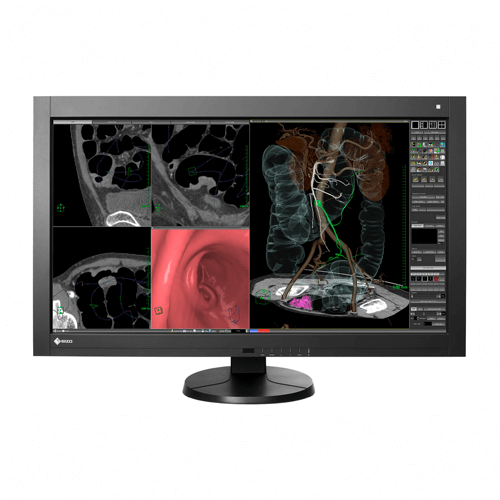 Eizo RadiForce MX242W (MX242W-BK) 2.3MP 61cm (24.1") COLOR LCD MONITORA 24.1-inch widescreen monitor with DICOM Part 14 calibration support, smooth color reproduction, and screen management for increased work efficiency.
Eizo RadiForce MX242W (MX242W-BK) 2.3MP 61cm (24.1") COLOR LCD MONITORA 24.1-inch widescreen monitor with DICOM Part 14 calibration support, smooth color reproduction, and screen management for increased work efficiency. -
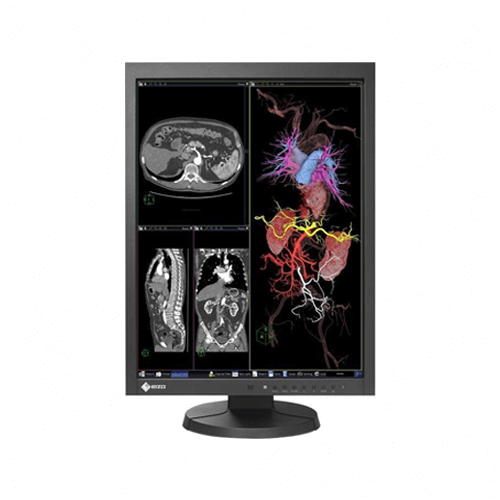 Eizo RadiForce MX215 (MX215-BK) 2MP Diagnostic Display MonitorA monitor ideal for viewing MRI and CT medical images in clinical review environments with built-in calibration sensor for maintaining optimal user settings.
Eizo RadiForce MX215 (MX215-BK) 2MP Diagnostic Display MonitorA monitor ideal for viewing MRI and CT medical images in clinical review environments with built-in calibration sensor for maintaining optimal user settings. -
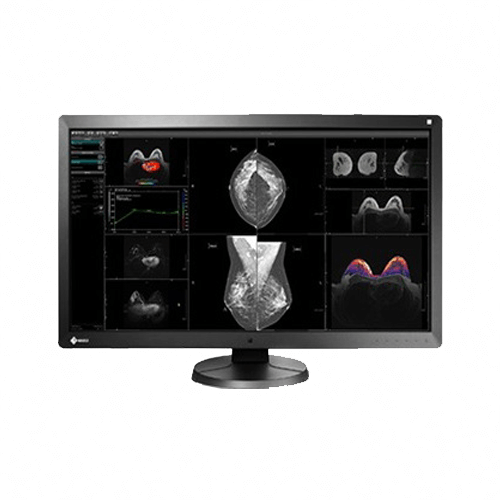 8MP 79cm (31.1") Color Diagnostic Display MonitorThe Eizo RadiForce RX850 (RX850-BK) is “Changing the Workstation Paradigm” by offering a truly multi-modality monitor capable of displaying various color and monochrome imaging modalities on one screen. When efficiency is important, viewing mammography specific and PACS software applications on the same screen keeps radiologists from having to wander the halls to their next read.
8MP 79cm (31.1") Color Diagnostic Display MonitorThe Eizo RadiForce RX850 (RX850-BK) is “Changing the Workstation Paradigm” by offering a truly multi-modality monitor capable of displaying various color and monochrome imaging modalities on one screen. When efficiency is important, viewing mammography specific and PACS software applications on the same screen keeps radiologists from having to wander the halls to their next read. -
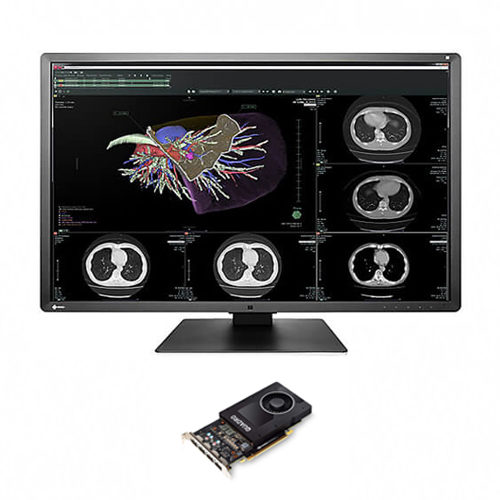 Eizo RadiForce RX660 (RX660-BK) 6MP 76cm (30.0") COLOR LCD MONITORA 6 megapixel monitor ideal for viewing a variety of medical images at the same time including CR, DR, CT, MRI, and ultrasound. Featuring a new design and unique EIZO technology, this monitor offers precise medical image viewing as well as ease-of-use.
Eizo RadiForce RX660 (RX660-BK) 6MP 76cm (30.0") COLOR LCD MONITORA 6 megapixel monitor ideal for viewing a variety of medical images at the same time including CR, DR, CT, MRI, and ultrasound. Featuring a new design and unique EIZO technology, this monitor offers precise medical image viewing as well as ease-of-use. -
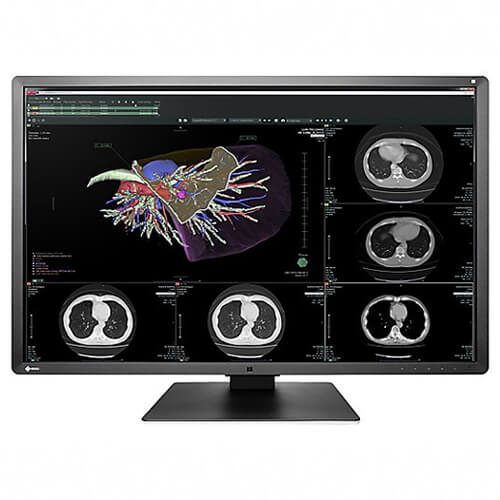 Eizo RadiForce RX660 (RX660-BK) 6MP 76cm (30.0") COLOR LCD MONITORA 6 megapixel monitor ideal for viewing a variety of medical images at the same time including CR, DR, CT, MRI, and ultrasound. Featuring a new design and unique EIZO technology, this monitor offers precise medical image viewing as well as ease-of-use.
Eizo RadiForce RX660 (RX660-BK) 6MP 76cm (30.0") COLOR LCD MONITORA 6 megapixel monitor ideal for viewing a variety of medical images at the same time including CR, DR, CT, MRI, and ultrasound. Featuring a new design and unique EIZO technology, this monitor offers precise medical image viewing as well as ease-of-use. -
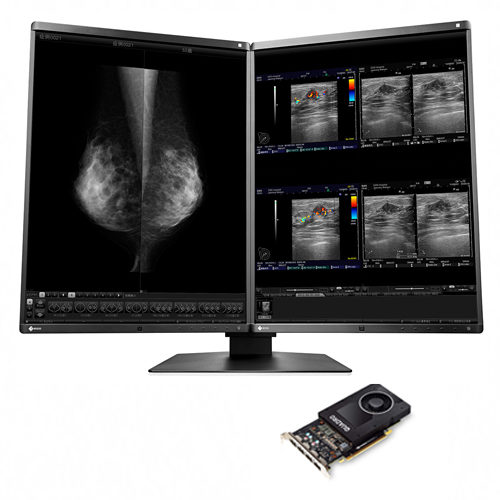 This Eizo RX560-DH-NP200 5 megapixel, bundled with the Nvidia Quadro P2000 video card high-brightness color monitor has the high-definition display necessary for breast imaging. It combines ease-of-use, such as a narrow bezel design to help your eyes swiftly move from one monitor to another, with new functions to help you focus on your work and maintain high performance.
This Eizo RX560-DH-NP200 5 megapixel, bundled with the Nvidia Quadro P2000 video card high-brightness color monitor has the high-definition display necessary for breast imaging. It combines ease-of-use, such as a narrow bezel design to help your eyes swiftly move from one monitor to another, with new functions to help you focus on your work and maintain high performance. -
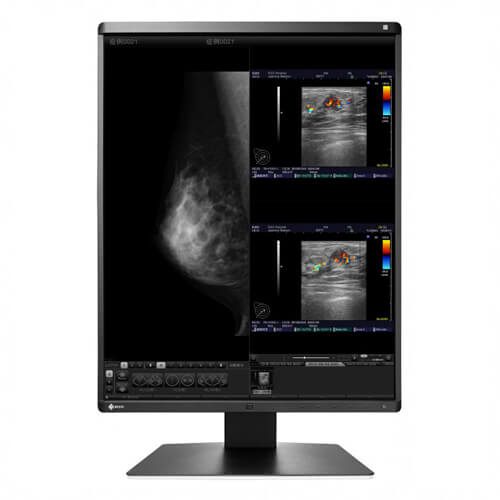 5MP 54.1cm (21.3") COLOR LCD MONITOR This 5 megapixel, high-brightness color monitor has the high-definition display necessary for breast imaging. It combines ease-of-use, such as a narrow bezel design to help your eyes swiftly move from one monitor to another, with new functions to help you focus on your work and maintain high performance.
5MP 54.1cm (21.3") COLOR LCD MONITOR This 5 megapixel, high-brightness color monitor has the high-definition display necessary for breast imaging. It combines ease-of-use, such as a narrow bezel design to help your eyes swiftly move from one monitor to another, with new functions to help you focus on your work and maintain high performance. -

- Two 5-megapixel LCD screens with consistently high and stable brightness for clear mammography images
- Nvidia Quadro P2000 video graphics card
- Clear perceptibility of microstructures through high contrast and Sharpness Recovery technology
- Homogenous display surface via automatic luminance distribution control (Digital Uniformity Equaliser)
- Set up for calibration, acceptance and consistency testing in accordance with DIN 6868-157 and QS-RL
- Effortless quality control and built-in calibration sensor
- Low power consumption and heat output
- Light sensor to measure ambient light at the diagnostic station
- Presence sensor means monitor is ready for immediate use whenever the user is in front of it
- Compact dual-screen solution through a shared stand with narrow bezels and ergonomic design
-
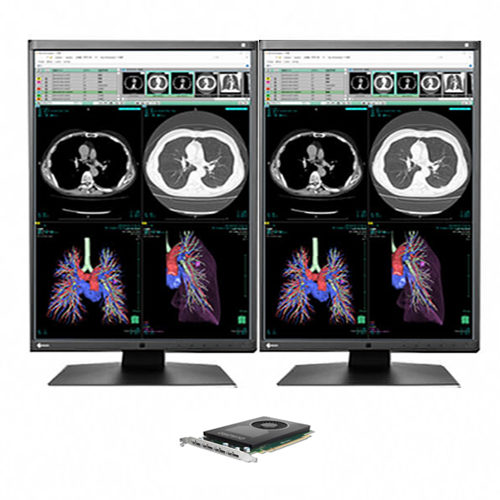
- 21.3″ 3MP Diagnostic Monitor
- 1536 x 2048 Resolution
- Display Both Monochrome and Color
- Hassle-Free Multi-Monitor Configuration
- Dicom monitor with FDA 510(k) clearance
-

- 21.3″ 3MP Diagnostic Monitor
- 1536 x 2048 Resolution
- Display Both Monochrome and Color
- Hassle-Free Multi-Monitor Configuration
- Dicom monitor with FDA 510(k) clearance
-
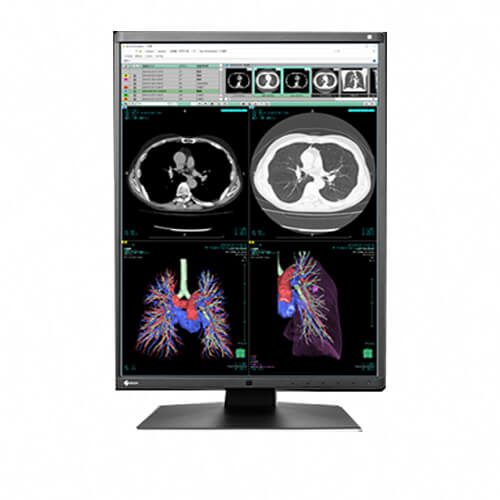
- 21.3″ 3MP Diagnostic LCD Monitor
- 1536 x 2048 Resolution
- Display Both Monochrome and Color
- Hassle-Free Multi-Monitor Configuration
- Dicom monitor with FDA 510(k) clearance
-

- 2x Eizo GX340-CL-P-BK
- 1x Nvidia Quadro P2000 video card
- Environmentally-Friendly LED Backlight
- Easy Calibration with Integrated Front SensorConsistency with DICOM Part 14 Calibration
- Brightness Uniformity for a Steadier Image Across the Screen
- Quick Brightness Stabilization for Instant Viewing
- Customer Assurance with Medical Standards
- Warranty with Safety and Trust
- Displaying with Separate Brightness Levels
- Diagnostic Precision with DICOM Part 14 Factory Adjustment
- Presence Sensor for Power Savings
- 10-Bit Simultaneous Grayscale Display
- Mode Selection for Optimum Viewing
- Wide Viewing Angles for Multiple People Use
- Brightness Stability Within Usage Time Guaranteed
- Versatile Positioning for Improved Operability
-
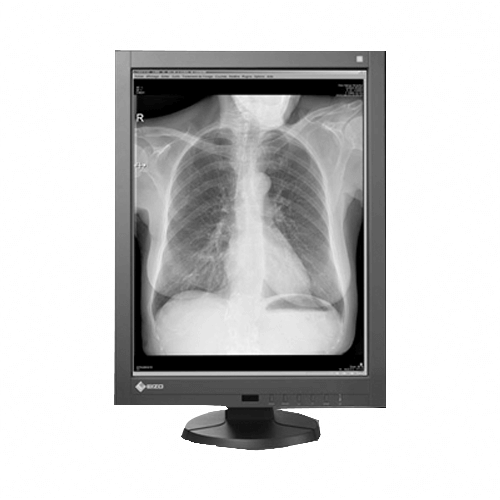 Eizo RadiForce GX340 (GX340-CL) 3MP 54cm (21.3") MONOCHROME LCD MONITOR
Eizo RadiForce GX340 (GX340-CL) 3MP 54cm (21.3") MONOCHROME LCD MONITOR- Environmentally-Friendly LED Backlight
- Easy Calibration with Integrated Front SensorConsistency with DICOM Part 14 Calibration
- Brightness Uniformity for a Steadier Image Across the Screen
- Quick Brightness Stabilization for Instant Viewing
- Customer Assurance with Medical Standards
- Warranty with Safety and Trust
- Displaying with Separate Brightness Levels
- Diagnostic Precision with DICOM Part 14 Factory Adjustment
- Presence Sensor for Power Savings
- 10-Bit Simultaneous Grayscale Display
- Mode Selection for Optimum Viewing
- Wide Viewing Angles for Multiple People Use
- Brightness Stability Within Usage Time Guaranteed
- Versatile Positioning for Improved Operability
-
 The MX315W is a 31.1-inch medical LCD monitor with an 8 megapixel resolution ― the highest in the RadiForce MX-Series of clinical review monitors. It has DICOM Part 14 calibration support, and can display a variety of medical images at the same time including CT, MRI, and ultrasound, making it incredibly cost effective.
The MX315W is a 31.1-inch medical LCD monitor with an 8 megapixel resolution ― the highest in the RadiForce MX-Series of clinical review monitors. It has DICOM Part 14 calibration support, and can display a variety of medical images at the same time including CT, MRI, and ultrasound, making it incredibly cost effective. -
 Eizo RadiForce MX216 (MX216-BK) 2MP Diagnostic Display MonitorA monitor ideal for viewing MRI and CT medical images in clinical review environments with built-in calibration sensor for maintaining optimal user settings.
Eizo RadiForce MX216 (MX216-BK) 2MP Diagnostic Display MonitorA monitor ideal for viewing MRI and CT medical images in clinical review environments with built-in calibration sensor for maintaining optimal user settings.
Types of Medical Diagnostic Display
Types of medical diagnostic displays include:
- Grayscale Monitors: Primarily used for displaying grayscale medical images like X-rays and mammograms.
- Color Monitors: Suitable for displaying color medical images such as MRI scans and ultrasound images.
- Multi-Modality Monitors: These displays can accurately render both grayscale and color images, making them versatile for various medical imaging modalities.
- High-Brightness Monitors: Specifically designed for viewing medical images in bright environments, such as operating rooms or interventional suites.
- 3D Monitors: Used for visualizing and manipulating three-dimensional medical images, commonly employed in surgical planning and interventional radiology procedures.
Why Diagnostic Radiology Monitors Matter?
Diagnostic radiology monitors matter because they are critical tools for accurate diagnosis and treatment planning in healthcare. High-quality displays with precise image reproduction are essential for detecting subtle abnormalities, assessing disease progression, and guiding therapeutic interventions. Reliable diagnostic monitors help minimize errors and improve patient outcomes by ensuring that medical images are viewed accurately and consistently.
Who Must Have Diagnostic Radiology Monitors?
Healthcare facilities and professionals who rely on medical imaging for diagnosis and treatment must have diagnostic radiology monitors. This includes hospitals, imaging centers, radiology practices, oncology clinics, and other medical facilities where medical imaging is performed. Radiologists, oncologists, surgeons, and other healthcare providers interpreting medical images also require access to diagnostic displays to perform their duties effectively.
Benefits of Diagnostic Radiology Monitors
The benefits of diagnostic radiology monitors include:
- High Image Quality: These monitors offer superior image quality with high resolution, contrast, and brightness, allowing for detailed visualization of anatomical structures and pathological findings.
- Consistency and Accuracy: Diagnostic displays are calibrated and optimized to ensure consistent and accurate image reproduction, reducing the risk of misinterpretation and diagnostic errors.
- Workflow Efficiency: By providing clear and precise images, diagnostic monitors help healthcare professionals streamline their workflow, leading to faster diagnosis and treatment decisions.
- Compliance with Standards: Diagnostic radiology monitors adhere to stringent regulatory standards and guidelines, such as DICOM (Digital Imaging and Communications in Medicine), ensuring compatibility and interoperability with medical imaging systems.
- Enhanced Collaboration: These displays facilitate collaboration among multidisciplinary healthcare teams by enabling the seamless sharing and review of medical images across different locations.
Key Features to Look for When Buying Medical Diagnostic Display
When buying a medical diagnostic display, key features to consider include:
- Image Quality Parameters: Look for monitors with high resolution, contrast ratio, luminance, and color accuracy to ensure optimal image quality.
- Calibration and QA Tools: Choose displays with built-in calibration and quality assurance tools to maintain image consistency and compliance with industry standards.
- Connectivity Options: Consider displays with various connectivity options, such as DICOM, HDMI, DisplayPort, and USB, to ensure compatibility with existing medical imaging systems.
- Ergonomic Design: Select monitors with adjustable stands, anti-glare screens, and ergonomic features to enhance user comfort and productivity during prolonged viewing sessions.
- Service and Support: Opt for displays from reputable manufacturers that offer comprehensive service contracts, technical support, and warranty coverage to minimize downtime and ensure long-term reliability.
Invest in Accuracy and Efficiency
Contact us today for a free consultation and discover how Hiliex can revolutionize how you diagnose patients.
